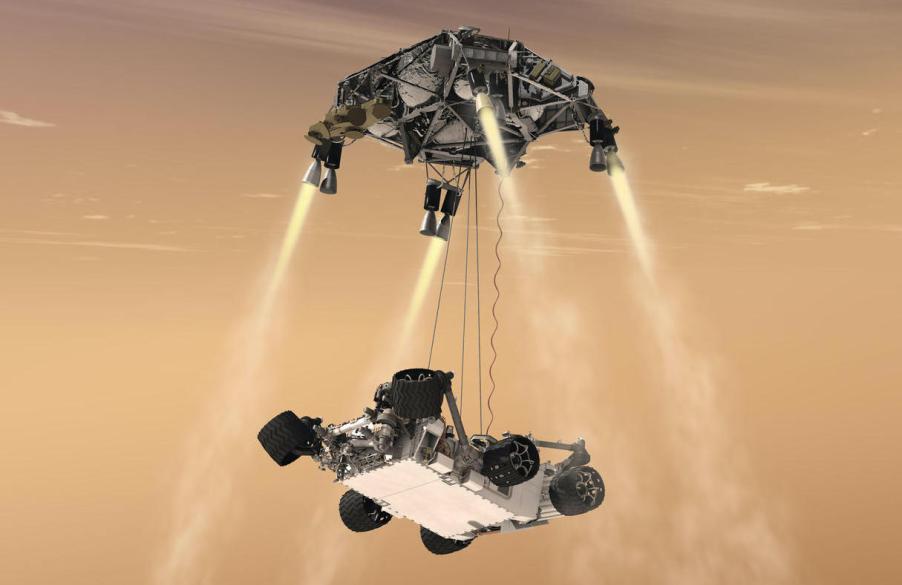
Excitement Builds As NASA Reveals Mars Rover Vehicle
NASA is committed to getting to the Red Planet in the next couple of years. To that end, it has designed a vehicle to traverse the Mars surface to take samples and relay Martian winds it will send audio to scientists. This week excitement swelled as NASA revealed the rover at the Jet Propulsion Laboratory in Pasadena, CA. Tests are ongoing.
The Mars Rover will leave the Earth forever in July 2020. It will take seven months before it touches down on Mars. Part of the mission of the Mars Rover is to look for signs of life-but not living life. “What we’re looking for is ancient microbial life,” says deputy mission leader Mike Wallace to journalists selected for the unveiling. “We’re talking about billions of years ago on Mars when the planet was much more Earth-like.”
It carries lots of instrumentation to help NASA understand the geological and chemical complexities of the planet. There are 23 cameras attached, two listening devices for those Martian winds, and lasers that are part of the chemical analysis of rocks.
The Mars Rover is powered by a nuclear reactor also powering articulating arms for experiments

It is powered by a nuclear reactor which will help the rover traverse about 200 yards each day. A Martian day is about the same amount of time as an Earth day. The reactor also powers articulating arms to hold, drill and bust open rock samples. Certain areas of the Mars surface have been identified as areas that were best for sustained life.
Billions of years ago Mars had surface water, a thick atmosphere, and a magnetic field. “It was much more conducive to the types of simple single-cell life that evolved here on Earth at that time,” said Wallace.
Hermetically stored samples will remain for future missions to retrieve

The samples will be stored in hermetically sealed tubes after the research is completed. They will be left on the planet to be transported back to Earth by a future mission. But that transportation will be very involved.
First, another mission that is hoped to take place in 2026 will pick up the samples. Once back in orbit the rocket will release the samples to orbit around Mars. “The samples would then Rendezvous with an orbiter and the orbiter would bring the sample back to Earth,” says Wallace. Those samples won’t make it back to Earth for 10 years.
A 500-yard deep crater is hoped to contain ancient organic molecules

Scientists have selected a crater that was once a 500-yard-deep lake as the first landing spot. Hopefully, the walls of the crater, which is 30 miles wide, helped protect what is hoped to be organic molecules scattered around the base.
The rover can also be used in the future to make oxygen for a manned mission.
It is hoped that the rover will survive for at least one Martian year, which is like two years on Earth. Mars has been kind to some past rovers like Curiosity. It landed on Mars in 2012, and continues to send back information, and is still taking commands right now. So, it has survived well beyond its six or seven-year expected lifespan.



